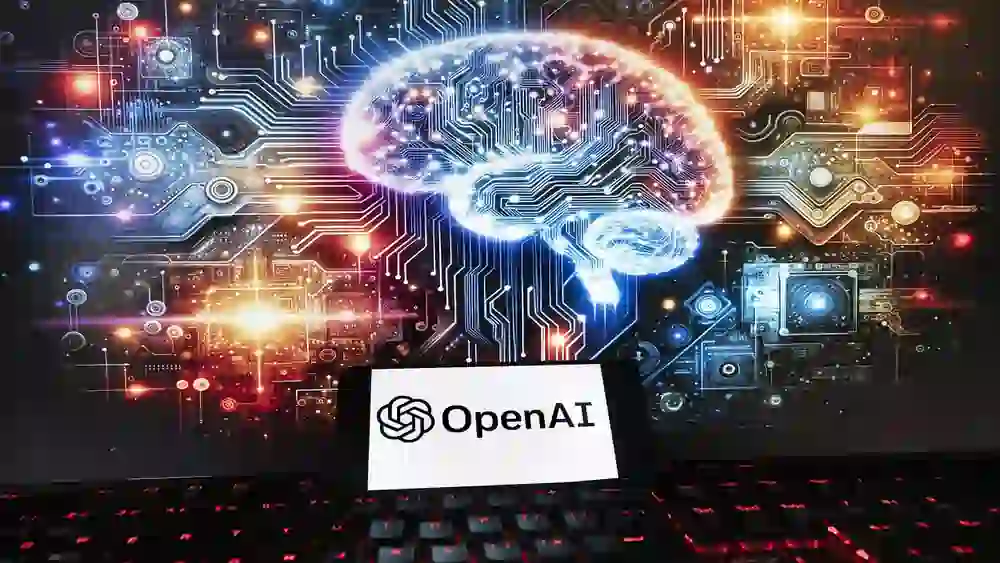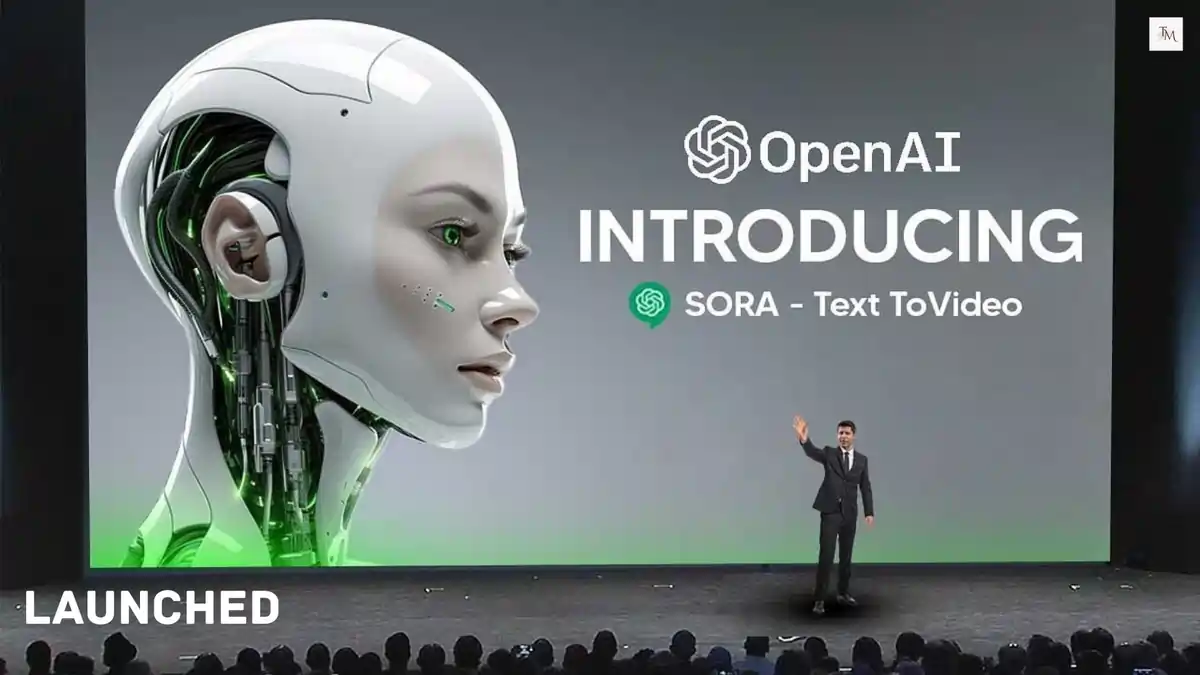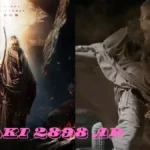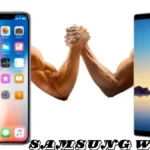Sora AI: Introduced in 2024, Sora AI is an artificial intelligence text-to-video generator that can produce videos up to a minute long based on user-generated descriptions or still images.
You can extend the duration of existing videos by moving them forward or backward in time. This technology is still in beta and not for public use.
How Does Sora AI Work?
The Sora model is a powerful tool that transforms written descriptions and sentences into high-quality, dynamic videos.
It does this by converting language models into scene sequences, as well as by a deep understanding of the language models. Using the Diffusion model and OpenAI DALL-E image models, this is achieved.
The diffusion model is a tool for converting random pixels into pictures and videos.
On the other hand, Sora, like GPT models, uses transformer architecture to understand the context and subtleties of the text input.
This ensures that the AI-generated video accurately reflects the original idea behind the textual request.
Sora AI Availability: According to reports this Sora AI will be available from Starting of 2025 after their testing now this AI tool is ready and in testing period. The red team has doing the testing.
What Are The Key Features Of Sora AI?
Sora is a video tool that has a number of features.
- Video Length: It can generate videos in varying lengths, visual styles, and aspect ratios. This includes short clips for social media and longer segments that are more detailed for storytelling.
- Scene complexity is capable of dynamically generating animated scenes, such as characters with vibrant emotions and objects. It can add a layer to realism regardless of the verbosity or simplicity of the prompt. It can also generate multiple scenes using a single video.
- Temporal Coherence: By maintaining smooth transitions and logical progress in the generated video segments, Sora ensures that the viewing experience will be cohesive and compelling.

What Is The Difference Between Sora AI And Traditional Video Production?
You would have to do everything, from writing the screenplay to shooting and editing. You’d also have to invest in equipment such as a camera, microphone, lighting, boom microphone, actors, writers, editors, and more.
Many visual content creators and small businesses may find this setup prohibitively expensive.
Sora AI creates scenes that are rich in detail, with many characters, different types of movement, accurate background details, and architectural details.
The visual quality is excellent. I understand what is being asked in the prompt and how things exist in the real world.
Five Possible Industry-Specific Use Cases Of Sora AI
This technology is becoming more mainstream, and more businesses in different industries are using it to achieve various goals.
1. Marketing And Advertising
Generative AI is a new technology that has eliminated all limitations on creativity. Marketers can now make the best offer to the right person at the right moment using AI-powered systems, marketing automation, and data analytics.
Sora helps you to deliver value to your customers through innovative video capabilities. Explore how.
a. Social Media Advertising
Do you plan to invest in video ads this coming year? They are not only more shareable but also have a higher click-through rate and engagement.
Video creation could be a good addition to your marketing strategy, as video advertising is expected to reach $456 Billion by 2025. Sora can make it happen.
Each platform can tailor the AI-generated video to its specific needs. It could be a quick, snappy clip for TikTok or a richly visual story for Instagram.
You can use Sora to create engaging video ads showcasing a fashion line’s latest collection by providing text descriptions about its mood, style, and key features yourself.
b. Innovative Product Demos
According to research, 71% of B2B marketing uses video content. Product demos are the most popular video type, as they help potential customers understand the product better and close the deal.
Sora is a truly revolutionary way to showcase business offerings. Tech startups can use this technologyTech startups can use this technology to create a video demonstration of their application’s latest features.
Use product demos on your product pages and newsletters to boost engagement and conversions.
c. Personalizing Video Messaging
What would you think if your favourite lifestyle brand sent you a video message that addressed you by name and offered product recommendations based on your previous purchases?
Creating buyer personas based on your customers’ shopping histories, preferences, and interests allows you to create highly customised videos.
You can create videos at various stages of the marketing funnel – from awareness to consideration to decision and loyalty.
2. Education
The benefits of Generative Artificial Intelligence in education are too numerous to mention. Teachers and students alike are experiencing a number of transformations, from customising learning materials to automating constructive feedback to real-time translation.
a. Visualizing Complex Concepts
This technology can be used to teach subjects such as history, science, maths, and literature that traditionally require a lot of abstract concepts.
A biology teacher can, for example, input a detailed description of mitosis, and Sora will generate a video showing the process in action. This makes it easier for the students to understand and retain the information.
A literature teacher can also convert a scene from Shakespeare’s Macbeth into a video to help students visualise the action and characters. This will improve their understanding and appreciation of the text.
b. Personalised Learning
Sora generates customized learning experiences by creating content from text, making it an effective tool.
A particular student can benefit from videos created by Sora that cater to their understanding and learning style.
You can add more visuals to help visual learners or more detailed instructions and examples for students who need more explanations.
c. Marketing Educational Institutes
Want to show off your campus, achievements, and unique offerings in a video format? Sora is able to make this happen.
Create a video to showcase your institution’s modern facilities, academic programs, and vibrant student culture.
This helps to attract potential students and also builds a strong brand image. These videos can reflect the values and ethos of your institution, making them powerful engagement tools on social media.
3. Retail and E-Commerce
The use of Generative Artificial Intelligence has enabled e-commerce companies to offer virtual product trials and to make personalised recommendations.
A brick-and-mortar retailer can enhance the in-store experience by enhancing store layouts with interactive displays and personalised shopping assistants. Sora has the potential to enhance both online and offline shopping. Here’s how:
a. Demonstrating The Use Of A Product
A dynamic video will convince customers more than a witty description. They can see the product in action. Why not use videos to your advantage in your eCommerce business?
As an electronics retailer, you can input the features of a smartphone to Sora and generate a video that highlights its camera capabilities, sleek design, and unique features. This will give your customers a thorough understanding of the product.
b. Making Tailored Product Recommendations
You may have a customer who is interested in outdoor gear but never purchased anything. Sora can create a video that showcases the latest camping equipment, outdoor clothing, and gadgets tailored to the shopper’s interests. This will make the recommendations more persuasive and engaging.
c. Video Advertisements For Seasonal Promotions
ECommerce sites or brick-and-mortar stores can use Sora to create compelling video clips that highlight special offers, bundles, or featured products for seasonal sales events such as Black Friday or Cyber Monday.
4. Entertainment
Content curation, audience targeting, and recommendation algorithms have all become more sophisticated with the integration of AI. They cater to individual preferences, boosting viewer engagement.
It is impossible to ignore the potential impact of Sora on the entertainment industry. This software allows for realistic visuals that go beyond the script. Here’s how:
a. Storyboards
Storyboards are your guide to making a video, TV show, or film. They are typically drawn on paper and outline every shot that you will need to shoot and how to do it before filming starts.
Sora allows you to design each shot as a video, not a sketch. This gives a better idea of how the scene will look on screen.
Sora can, for example, turn a text description into a detailed video storyboard of a battle between heroes and dragons at the end of a fantasy movie, which helps the production team visualise and plan this sequence.
b. Create And Market Teasers And Videos
Resource-intensive, creating teasers, videos, or other social media content to promote upcoming films, TV shows, and video games is not always possible.
Production companies can use Sora to input short descriptions of plots or key scenes to create videos that capture the essence. This method is not only time-saving but also affordable.
If you’re making a thriller, for example, you can create teaser videos to hint at plot twists or key characters. This is great for creating buzz on social media.
c. Producing Localised Video Content
Sora is a tool that allows content creators to create localised video content using translated text descriptions.
This could reduce costs and time associated with traditional dubbing and subtitle methods and make content more accessible for non-English speakers.
5. Gaming
The gaming industry is a pioneer in the technology field, harnessing technology to create immersive games for more than 3 billion players around the world.
It has also played a vital role in helping businesses engage, inform, and connect people on a large scale.
Now, Generative Artificial Intelligence, especially Sora, is poised to further push the boundaries of gaming. It will enable creators to revolutionize their work and deliver exciting new experiences to players.
You’re talking about a concept that uses a tool such as “Sora” to develop various aspects of games.
This is a good example of how advanced AI techniques are increasingly integrated into the gaming world. Let’s look at each of these areas in more detail.
a. Create Cutscenes Using Player-Driven Videos
AI creates dynamically generated cutscenes that are not scripted but instead based on the player’s choices in dialogue, narrative, and decisions.
Sora understands the context, emotions, and actions described in the textual descriptions to develop visual elements and animations.
This technology can also adapt in real time to the choices of the player. It will change the direction of the cutscene based on their narrative choice, creating a unique gaming experience.
b. Enabling Procedural Content Generation
PCG is a method of creating game content automatically using algorithms. Sora’s PCG could be enhanced by creating not only random or algorithmic-based content but also contextually relevant and variable content based on the textual description.
The AI can convert descriptions of game environments into 3D scenes with character animations. It will adjust textures, lighting, and objects according to the narrative context.
Sora is able to interpret the functions of items and determine how they should interact with characters or their environment. This allows him to generate appropriate animations and effects.
c. Customizing Characters
Character customization allows players to create avatars that represent them or their ideal character.
Sora can take it a step further by creating unique visual representations based on textual descriptions.
This includes physical attributes, clothing, and accessories, as well as personality traits that could influence expressions or posture.
Sora’s dynamic character update allows players to update their descriptions or add new attributes, making character customization interactive and iterative.

OpenAI Sora: Ethical Considerations & Safety Measures
Sora is the leader in this relatively new technology. There are grave concerns over its potential harms. These could include:
- The public is often exposed to explicit or pornographic material that uses deep fakes or other figures of celebrity or well-known people.
- Videos of politicians making false statements and spreading misinformation.
- Videos that discourage vaccination promote false cures or undermine public health guidelines
- Malicious content depicting violence, discrimination, or unrest
How OpenAI Addresses Ethical Concerns
OpenAI acknowledges that Sora will have a significant impact on creativity. However, the model’s power concentration and copyright concerns are still a concern.
It is a crucial component in creating and releasing AI systems that are increasingly safe. OpenAI has a solution for all of this:
- The model is being tested objectively by red teams. These are experts in misinformation, hateful material, and bias.
- It is developing tools to detect misleading material, such as a classification classifier (such as C2PA metadata), that can identify the source of the video.
- The text classifier checks and rejects inputs that violate OpenAI’s usage policy, such as those that ask for extreme violence, sexual content ha, useful images, or others’ IP.
- OpenAI has created robust image classifiers that review the frames in every video to make sure the content is compliant with the usage policy before the content is displayed to the user.
Security Concerns Raised By Open AI’s Sora, A Realistic Video Generator
Some AI researchers are praising the latest AI model that can convert text to video. Still, they also express concern about video deep fakes in global elections in 2024.
OpenAI’s latest artificial intelligence program, Sora, can turn text descriptions into photorealistic videos. Video generation model sparks excitement over AI technology and growing concerns about how fake videos can worsen disinformation.
Sora AI can create videos of up to 60 seconds using text instructions or text and an image. A text prompt describes “a stylish woman walking down a Tokyo city street filled with glowing neon lights and animated signage.”
Other examples include a snow-covered dog, cars driving on roads, and even more unbelievable scenes, such as sharks swimming between skyscrapers in the city.
Hany Farid, from the University of California at Berkeley, says there’s no reason why text-to-video technology won’t continue to improve. “This will bring us closer to the day when it will become difficult to tell the difference between the fake and the real,” he adds.
This technology, combined with AI voice cloning, could open up a new front in creating deep fakes that people say and do things they have never done.
Performance of Sora AI
Sora AI was developed in part using OpenAI technologies such as DALL-E, the image generator, and the GPT large language model.
Text-to-video AI models have lagged behind other technologies when it comes to realism and access.
Still, Rachel Tobac, the co-founder and CEO of SocialProof Security (a white-hat hacking group focused on social engineering), says that Sora is “an order of magnitude more realistic and less cartoonish.”
Sora uses two AI approaches to achieve a higher level of realism. First, Sora uses a diffusion model that is similar to the ones used by AI image generators like DALL-E.
These models gradually learn to convert randomised pixels into coherent pictures. The second AI technique, called “transformer” architecture, is used to contextualise data and put it together.
Large language models use transformer architecture to combine words into sentences that are generally understandable.
OpenAI, in this case, broke down video clips into a visual “spacetime patch” that Sora’s transformer architecture can process.
Sora still makes plenty of mistakes in his videos, including a human walking with the wrong legs, a chair floating randomly, or a cookie that has been bitten but no bite marks.
Arvind Narayanan, a Princeton University professor, believes that deep fake videos can be detected for the time being because Sora’s video still has some weird glitches. He also warned that “we will have to find new ways to adapt our society in the future.”
OpenAI has not made Sora public yet, as it is still performing “red team” tests where experts attempt to breach the AI model’s safety safeguards to determine its potential misuse.
OpenAI’s spokesperson says that the group of experts currently testing Sora is “domain experts in areas such as misinformation, hatred content, and bias.”
This testing is crucial because bad actors can use artificial videos to create false footage, such as to harass someone or influence a political vote.
AI-generated deep fakes are a source of misinformation and disinformation that concerns leaders in the business, government, and other sectors, as well as AI experts.
When asked if the company plans to make Sora AI widely available by 2024, an OpenAI spokesperson said that the company is “taking important safety measures before making Sora accessible in OpenAI products.”
The company, for example, uses automated processes to prevent its commercial AI models from generating images of extreme violence or sexual content.
It also blocks the use of real politicians and celebrities. These safety measures will be vital as more people are participating in the elections than ever before.
RELATED ARTICLE: “BharatGPT” New AI Tool of India, See Its Features & Differences From ChatGPT











2 thoughts on “Sora AI: A New Open AI’s Tool Which Use to Make Text to Video”